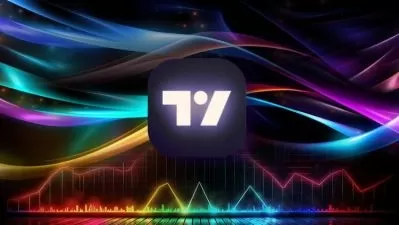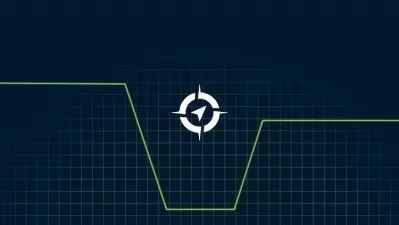About Options TradingLearn More
Options trading is a strategic investment tool that uses a contract to buy or sell a specified financial asset, without any obligation to do so. Option trading occurs extensively in market trade, because it is lower risk than other investment tools, and has the potential to yield significant returns. Options trading training on Udemy can teach you the principles and strategies of this widely popular investment tool.
Sort by:
Sorting
The newest
Most visited
Course time
Subtitle
Filtering
Courses

Udemy


EDUCBA Bridging the Gap
Options Trading: Strategies| Pricing| Practical Insights 17:15:06
12/12/2024
Subtitle
![Cryptocurrency Intraday Trading System 2023 [Profit Machine]](https://traininghub.ir/image/course_pic/40919.jpg)
Udemy


Sandip Jha
Cryptocurrency Intraday Trading System 2023 [Profit Machine] 3:48:53
English subtitles
09/25/2024
Subtitle

Udemy


Col (Dr) Shabbar Shahid. M-Tech, MBA(Fin), CE, FIE(I), PhD
Options Trading. Complete Understanding of Options Trade-D2 8:22:09
English subtitles
06/01/2024

Udemy


Hudson and Thames Quantitative Research
Advances in Momentum Trading Strategies 5:33:07
03/12/2024
Frequently asked questions about Options Trading
Options are contracts that give the owner the right, but not the obligation, to buy or sell an asset at a certain price, either before or on a specific date and time. The price at which the option's owner can buy or sell the asset is called the "strike price." Traders and investors use options to generate income, to hedge against risk, or to speculate. An option is a derivative because it derives its value from the asset that underlies it. The underlying asset can be stocks, bonds, commodities, or currencies. An option to buy an asset is called a "call option," and an option to sell an asset is referred to as a "put option." For example, suppose you bought a call option for 100 shares of Company A's stock at US$10.00 per share with an expiration date of March 31. You would have purchased the option to buy 100 shares of Company A on or before March 31.
There are two basic types of options you can buy: calls and puts. When you buy a call option, you are purchasing the right to buy the asset on or before a specific date and time, and you're hoping the price rises. When you buy a put, you are purchasing the right to sell the asset and hoping the price drops. For example, if you buy a call in 100 shares of Company B stock at US$10.00 per share that expires on December 31, you have the right to purchase those stocks at that rate—no matter what the actual price ends up being. You can profit off this option by exercising your right to buy the 100 shares and then sell them right away. If, for instance, the price of Company B's stock rises from US$10.00 per share to US$13.00 per share by December 15, you have the potential of earning US$3.00 per share. If the price drops, all you lose is the price you paid for the option. If you bought a put, you'd hope the price fell, and you'd profit from that difference.
Options are different from stocks in that when you buy options, you're buying the right to buy or sell an asset. You can buy options on several different kinds of assets, such as stocks, bonds, currencies, and commodities. When you buy stocks, you own a piece of the company that issued the stock. For example, if you bought 100 shares of Amazon stock, you would own 100 of the over 500 million shares of Amazon stock that are on the market. When you buy an option, you aren't buying the stock itself. You're only securing the right to purchase or sell a certain number of shares of that company on or before a specific date and time. You could, for example, purchase the option to buy 100 shares of Amazon stock at US$3,286.00 by April 30. If the price goes up by the end of April, you could exercise your option and realize a profit.
A short option is an option to sell an asset. It's also referred to as a put option. When someone purchases a short option, they are hoping the price drops after they buy the option. When you buy a short option, you are reserving the right to sell the asset at a specific price on or before a certain date and time. If the price falls by the time that date comes around—or before—you can make a profit. For example, if you buy a short option on the United States dollar versus the Japanese yen (USD/JPY), you do so thinking the dollar is going to lose value versus the yen. For instance, if the price of USD/JPY is 104.50 when you purchase a short option with a one-month expiration, you can make a profit if the price of one dollar goes lower than 104.50 yen over the course of that month. If the price goes higher, you only lose what you paid for the option.
Vega, theta, delta, and gamma are terms used to describe the risk parameters of an option. Vega is a measurement of how volatile the asset's price is expected to be in the future. This is also known as the implied volatility and refers to how the market perceives conditions like the economy, the company's health, or geopolitical factors that may affect the price. Theta refers to how the price of an option decays as time goes by. Delta is the amount of change in the price of an option due to a change in the underlying asset price. Gamma is a measure of how delta changes as time passes and how the price of the underlying asset moves. Each factor affects the price of the option, making it rise or fall. Investors may choose to use the vega, theta, delta, and gamma of different options to select which ones best fit their investment strategy and risk tolerance.



























